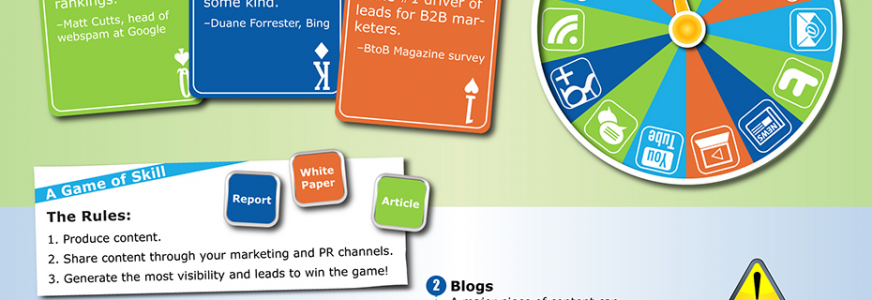
SEO Is Dead, How Do You Promote Great Content?
SEO is dead!
Well, not quite. But a leading industry expert back in March 2012 that the era of being able to trick search engines was about to end. While this comment lead to an immediate backlash from SEO professionals, it seems he’s right – Google released the Penguin update to their Panda algorithm in April, which penalized old-fashioned SEO technique and promoted quality content.
There’s a reason that “content marketing strategy” is quickly becoming a buzzword among up-to-date marketers. For one, it’s effective at driving better ROI for your business. As if you needed any more evidence, readers love it. And tools are available to allow you to promote great content. Read on to discover how you can abandon SEO in favor of a modern strategy that’s friendly to both readers and Google.

Quality Matters.
Matt Cutts is the head of the web spam team at Google, and he’s built a career that’s all about fighting terrible content. He says that “quality content is the key to Google rankings.” Well, what does “quality” mean, anyway? It definitely doesn’t mean filling your content with text that’s only readable to search engines. It means identifying the long tail (keywords consisting of three or more words) that are driving conversations among your prospects, and covering them. Not convinced that long tail matters?
According to SEOMoz, long tail search is how 70% of connected citizens search for information on products and services. You need to view keyword research as a tool for identifying topics that resemble conversations among people with digital reach and relevance. Once you’ve found these keywords, you don’t stuff them into your content. You add your unique brilliance and make sure you’re writing words that Google wants to share – because they’re truly original.
Write and Optimize
Your on-page SEO doesn’t really matter that much in late 2012. Your content marketing strategy is a much more important topic. If you’ve been playing the content marketing game right, you’ve built relationships with thought leaders in your industry, by tweeting their content and asking engaging questions. There are still SEO-friendly tactics you can employ in your content marketing strategy, by including a keyword in your page title and ensuring your content is optimized for search. Your writing still matters, and it’s essential to produce something that’s good enough for people with impressive personal brands to share on their social media accounts.
Promote Great Content and Share
Once you’ve spell-checked, copy-edited and re-read your work, your job isn’t over the second you hit “publish.” Great content can go unnoticed, unless you’re truly taking advantage of the opportunity to promote your work in all the right places. You need to distribute your work on LinkedIn, Google+, Pinterest, Facebook and Twitter. Where are your buyer personas spending their time and connecting with brands? Ensure you’re there, and positioned to connect with your prospects.
Once you’ve written a context-relevant, link-bait worthy piece of blog content, you’re still not done. How can you gain more traction off the article? Can you develop a webinar or podcast for prospects? Can you spin it into a viral-ready infographic or video? In late 2012, keyword stuffing or using SEO tricks isn’t enough to explode your company’s SEO or draw thousands of qualified leads to your company’s web page.
You need to ensure you’re writing about the right topics by discovering what’s leading conversations and thought in your industry. Cover these topics well, and add quality to the conversation. Finally, promote by drawing on your established relationships with recognized thought leaders. SEO is no longer about tricking Google into ranking your web pages highly, it’s about developing a content marketing strategy that consistently delivers valuable, timely information to your prospects.



